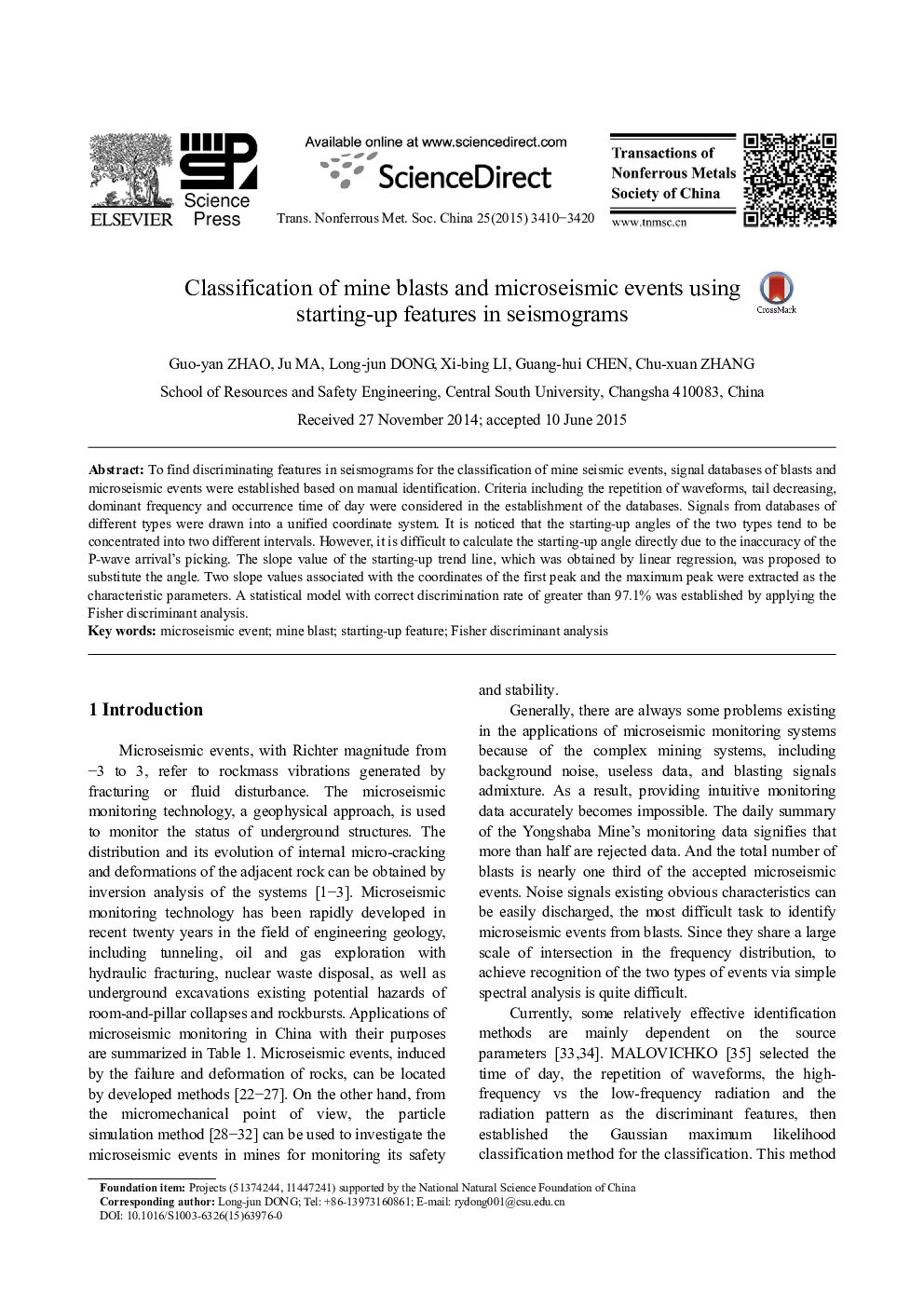| Article ID | Journal | Published Year | Pages | File Type |
|---|---|---|---|---|
| 1636494 | Transactions of Nonferrous Metals Society of China | 2015 | 11 Pages |
Abstract
To find discriminating features in seismograms for the classification of mine seismic events, signal databases of blasts and microseismic events were established based on manual identification. Criteria including the repetition of waveforms, tail decreasing, dominant frequency and occurrence time of day were considered in the establishment of the databases. Signals from databases of different types were drawn into a unified coordinate system. It is noticed that the starting-up angles of the two types tend to be concentrated into two different intervals. However, it is difficult to calculate the starting-up angle directly due to the inaccuracy of the P-wave arrival's picking. The slope value of the starting-up trend line, which was obtained by linear regression, was proposed to substitute the angle. Two slope values associated with the coordinates of the first peak and the maximum peak were extracted as the characteristic parameters. A statistical model with correct discrimination rate of greater than 97.1% was established by applying the Fisher discriminant analysis.
Related Topics
Physical Sciences and Engineering
Materials Science
Metals and Alloys
Authors
Guo-yan ZHAO, Ju MA, Long-jun DONG, Xi-bing LI, Guang-hui CHEN, Chu-xuan ZHANG,
